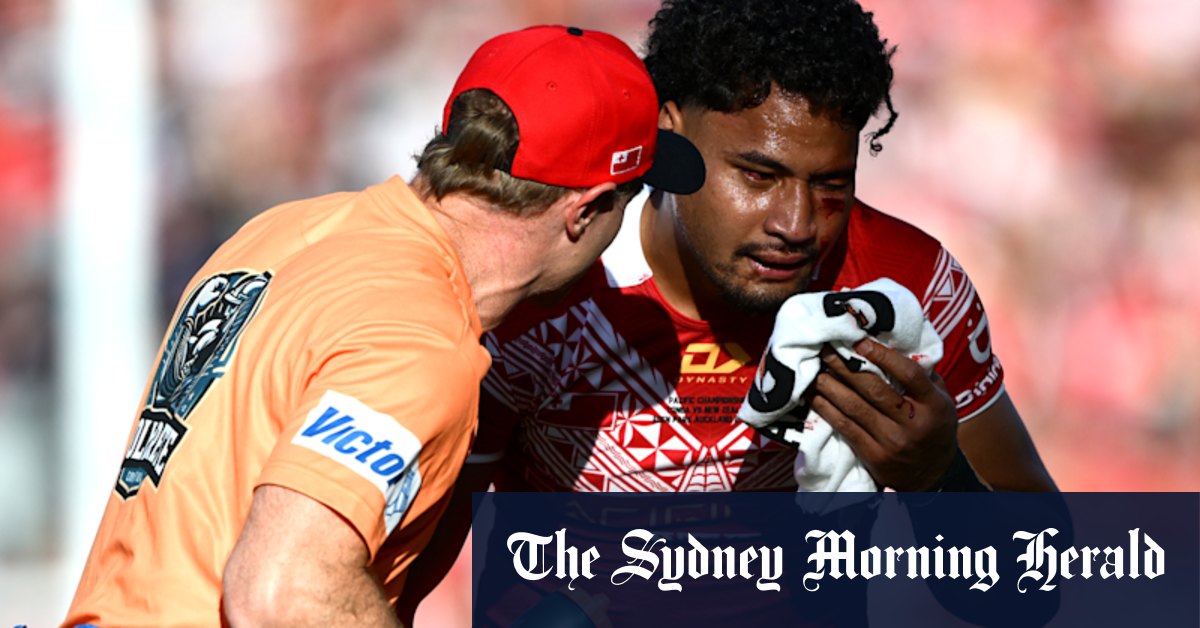
Eli Katoa posted a photo of himself from his hospital bed to inform his fans he was recovering.Credit: Instagram
While there has been plenty of debate about why Katoa was allowed play, questions will be asked about the lack of game-day communication and why Tonga’s medical staff were not shown vital TV footage that could have prevented an incident that has left a player seriously injured in hospital and hurt the image of rugby league.
Coaches rarely watch the live broadcast and therefore are unaware of what is being said on commentary during the game.
The NRL is conducting a thorough review, but not expected to deliver its findings until next week.
“Our first priority is the health of Eliesa Katoa,” an NRL spokesperson said. “The NRL Chief Medical Officer is monitoring his condition and is in close contact with the medical experts involved.
“The NRL is currently reviewing the circumstances of Sunday’s events in line with usual practice.”
Independent doctors watch NRL matches and regularly rule players out if they display concussion symptoms, but are not required to watch footage before a game including the warm-up.
Katoa posted a photo of himself from his hospital bed on Monday, and said: “I can do all things through Christ who strengthens me.
“Appreciate everyone for checking in, sorry I haven’t got back to any of you guys, but I really appreciate all the love and messages. Ofa atu.”
Samoa co-captain Junior Paulo said players would always be reluctant to rule themselves out if they displayed concussion symptoms, so it was always important for the medical staff to make the right call.
Loading
“Most rugby league players aren’t going to say ‘no’ or turn down the opportunity to represent your country or play in the NRL in general,” Paulo said.
“There are protocols in place for why you probably shouldn’t be allowed to return to the field, and that’s for the health concerns.”

